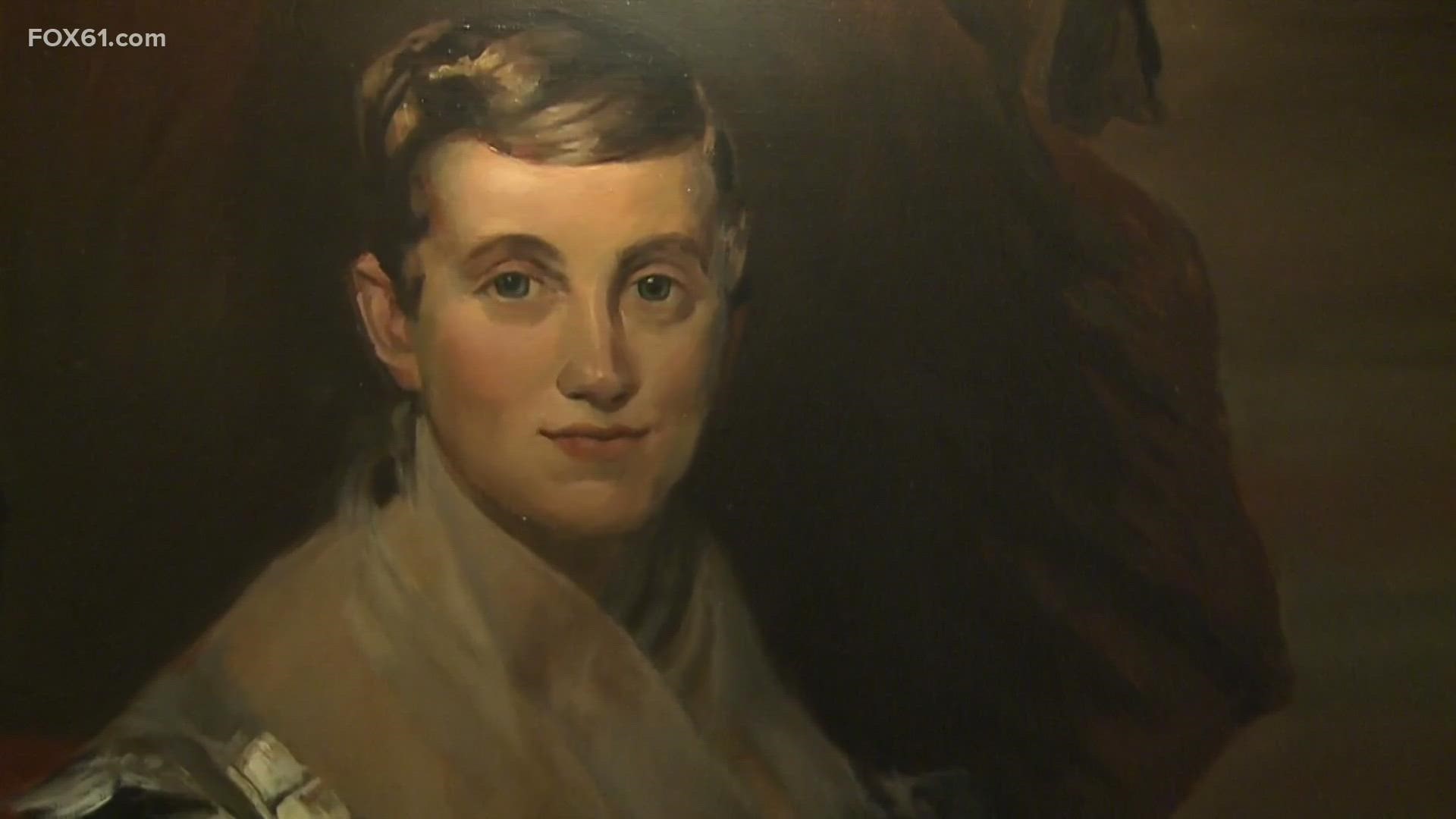CANTERBURY, Conn. — A battle over integrating classrooms began in Connecticut long before the landmark Brown v. Board of Education decision by the U.S. Supreme Court.
Prudence Crandall is known as the heroine of Connecticut, with a statue memorializing Crandall and a Black student sitting in the state capitol.
Crandall transformed a vacant Canterbury home into a school and, in 1831, opened the Canterbury Female Boarding School, where she and her sister taught alongside other educators.
In a groundbreaking move, 28-year-old Crandall admitted two Black students into her school, Sarah Harris and Mariah Davis.
Joanie DeMartino, museum curator and site superintendent of the Prudence Crandall Museum and National Historic Landmark, shared how the freed women started their education despite Connecticut still permitting slavery.
DeMartino said Davis came to Canterbury from Boston and was working as Crandall’s household assistant; she’d also sit in on Crandall’s classes when she had completed her daily tasks.
Harris’ family had moved from Norwich to Canterbury to become farmers.
Harris’s husband, Charles, and her father-in-law William distributed “The Liberator,” an abolitionist newspaper.
Davis would share copies of the newspaper with Crandall and Crandall gained insight into the struggles Black women faced while seeking opportunities for higher education.
Harris was 20 years old and worked as a domestic servant at what was then known as the Jedidiah Shepherd House but dreamed of becoming a teacher.
She took a leap of faith and asked Crandall if she could be admitted to her school.
However, Crandall was not on board with the idea from the jump.
“She’s not sure how the town is going to respond, but she knows and realizes it’s the right thing to do,” DeMartino said. “So, by November of 1832, Sarah Harris becomes a full-time student here at the Canterbury Female Boarding School.”
However, the town did not take too kindly to Harris’ enrollment. DeMartino said the townspeople pressured Crandall to expel the two young ladies.
In response to Harris and Davis’ enrollment, the Connecticut legislature created the “Black Law,” which outlawed schools from teaching Black students without the town’s permission.
“Prudence Crandall was arrested a month after the Black Law was passed,” De Martino said. “She spent one night in jail. Abolitionists were ready to pay her bonds down because they were supporting the school.”
Despite not being supported in Connecticut, Crandall gained international support as she went through three trials for breaking the Black Law.
DeMartino said Crandall left her sister to run the school and then contacted the Liberator for help reaching out to Black ministers in New York City, Philadelphia, and Providence to spread the word about her school to families who could afford it.
“When she returns to Canterbury after visiting all these cities throughout February, she closes her school down for white students in March and then reopens April 1, 1883, for young Black and brown students to attend,” DeMartino said.
In May of 1833, 16-year-old Eliza Hammond of Providence, RI, became the first Black student to be admitted to the school once it reopens. Still, not long after her arrival, the community made it clear they did not welcome Black students with escalating threatening behavior.
DeMartino said community members contaminated the school’s water well with horse manure, committed animal abuse on the school’s property, and even set the school on fire while students were still inside the building in 1834.
Following the fire in 1894, Crandall decided to close her school because she couldn’t guarantee the safety of her students.
She went on to get married and moved around to Illinois, Kansas, and New York, where she continued her involvement in progressive movements.
However, Crandall’s legacy lived through her students, as many of them became educators, abolitionists, and activists in their respective communities.
Of those students, Mary Harris went on to move to New Orleans, where she and her husband worked as teachers.
“They start teaching the newly freed African Americans, and they become so well known as teachers that they are asked to help found a college which at that time was straight College," DeMartino explained. "Mary was teaching in the English department, and her husband Pelman was managing what was called The Normal School, which was the Teacher's College, the teachers' department of that college. But straight college later became Dillard University, a recognized HBCU today."
Symphonie Privett is an anchor and host of The Buzz at FOX61 News. She can be reached at sprivett@fox61.com. Follow her on Facebook, Twitter and Instagram.
---
Have a story idea or something on your mind you want to share? We want to hear from you! Email us at newstips@fox61.com
----
HERE ARE MORE WAYS TO GET FOX61 NEWS
Download the FOX61 News APP
iTunes: Click here to download
Google Play: Click here to download
Stream Live on ROKU: Add the channel from the ROKU store or by searching FOX61.
Steam Live on FIRE TV: Search ‘FOX61’ and click ‘Get’ to download.

